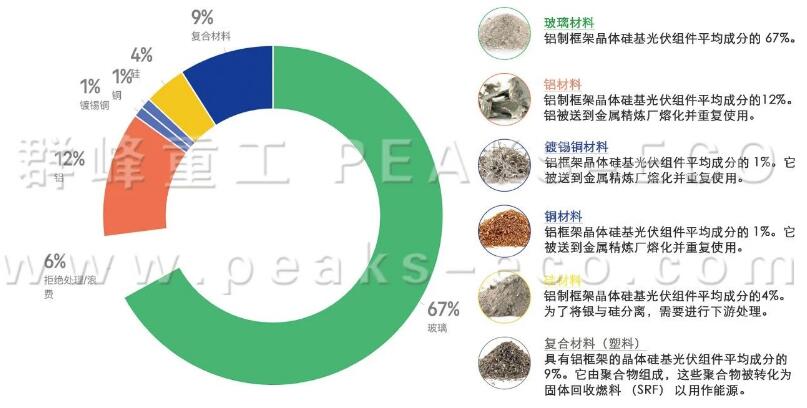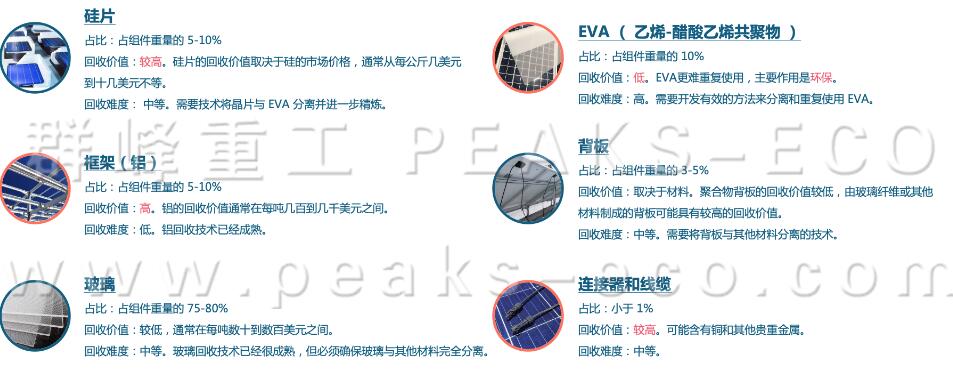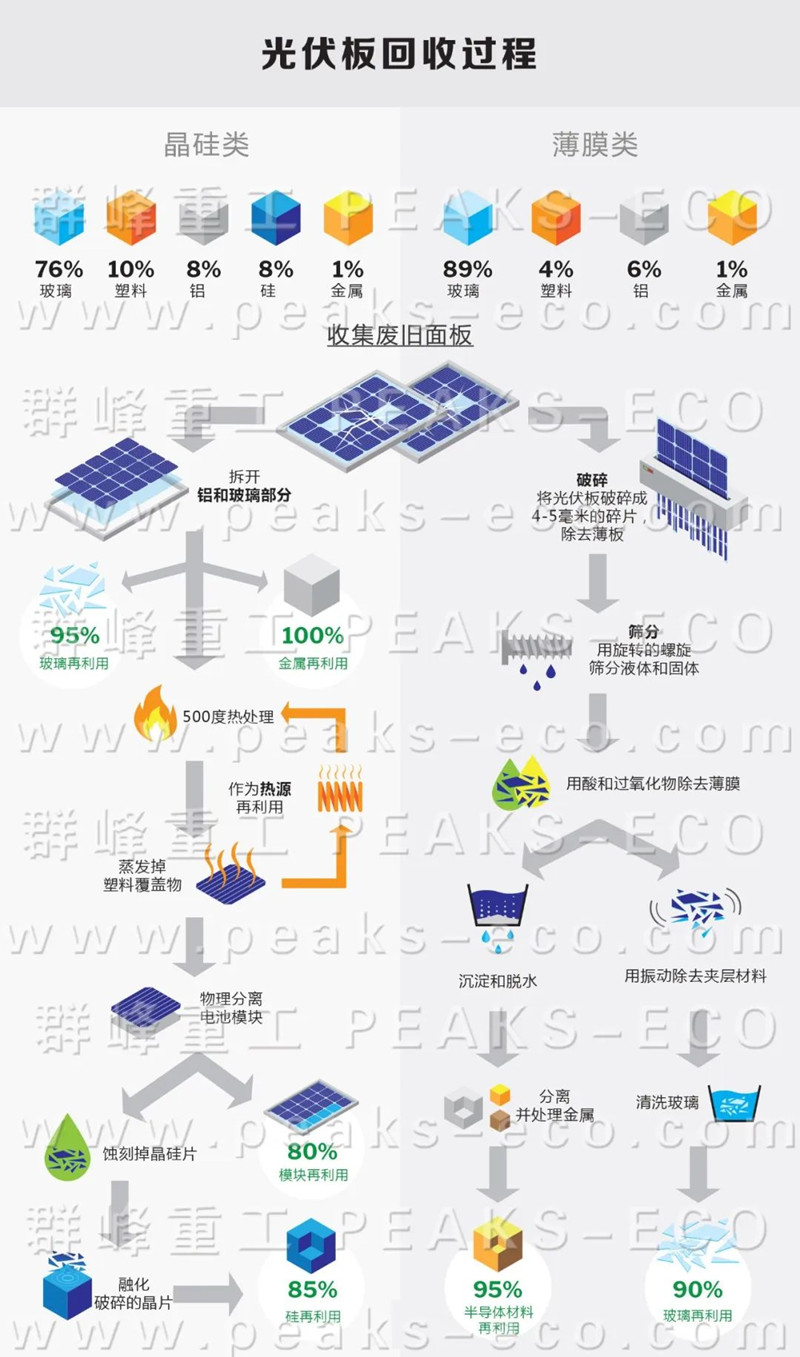Average recycling rate of PV modules The average recycling rate of PV modules based on crystalline silicon and aluminum frames is as high as 94%. The goal of recycling is to separate the different component materials in order to utilize them and create a true circular economy.

Photovoltaic panels, the cornerstone of the renewable energy sector, have a complex composition of materials, many of which have a very high recyclable value. Monocrystalline PV panels are one of the most common types of PV panels on the market today. Below is an analysis of the various components of monocrystalline PV panels:

Crystalline Silicon Panel Recycling
- Frame and junction box disassembly: Starting with careful disassembly to separate the aluminum and glass components, the extracted frames and junction boxes can be reused for new panels, thus reducing the need for raw materials.
- Glass and Wafer Separation: The glass is separated from the silicon wafer using thermal, mechanical or chemical methods. Approximately 95% of the glass can be reused.
- Thermal treatment: Materials are treated at 500°C, allowing the encapsulated plastics to evaporate, and even these wastes are reused as a heat source.
- Silicon and metal purification: Chemical and electrical methods refine silicon wafers and metals. Purified silicon can be reused in solar cells and metals can be used in high-tech industries.
Thin Film Panel Recycling
- Crushing and Refining: Panels are fed into a crusher and further processed in a hammer crusher to ensure particles are 4-5 mm or smaller.
- Liquid Separation: A rotating screw separates the solid and liquid components and the liquid is precipitated and dewatered to obtain purity.
- Semiconductor Materials: Semiconductor materials are separated at the metal processing stage, recovering approximately 95% of the material.
- Final Glass Recovery: Through rinsing and vibration, up to 90% of the glass is retained and reused in manufacturing, minimizing waste and conserving resources.
